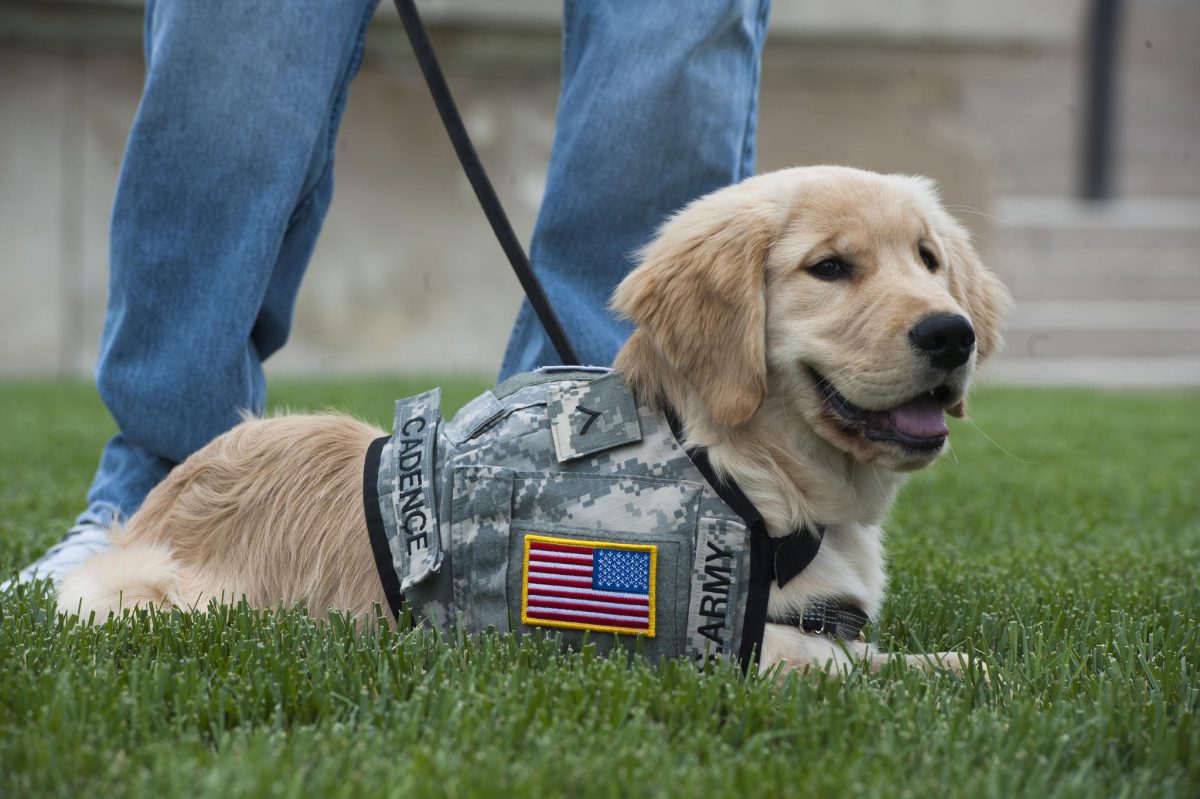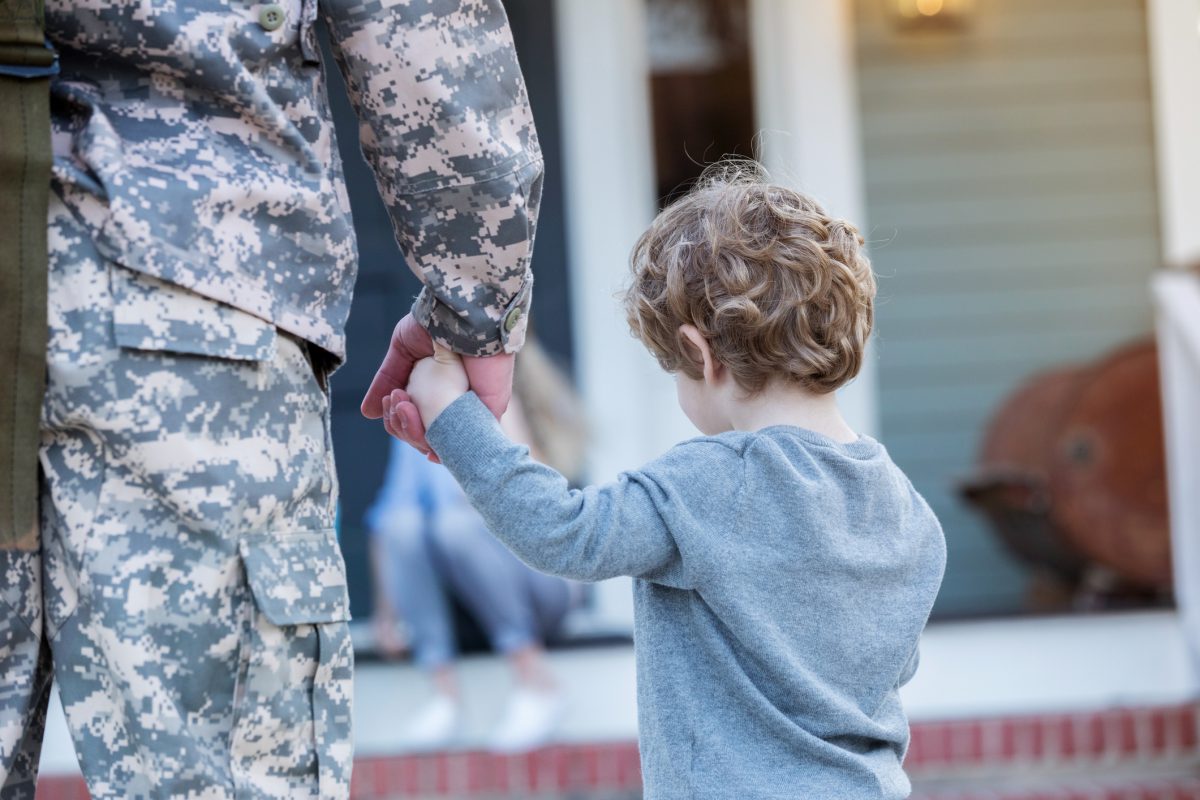Veterans may be entitled to benefits from the Department of Veterans Affairs for service dogs, but the same is not necessarily true of comfort animals or emotional support animals. The VA has been providing veterinary benefits to Veterans diagnosed as having visual, hearing or substantial mobility impairments under certain conditions.
In 2016, the Department of Veterans Affairs announced a pilot program designed to pair veterans suffering from certain mental health issues with service animals. This pilot program was an expansion of an existing VA effort to help veterans by providing service dogs to those in need.
The 2016 VA announcement about the pilot program announced:
Through the pilot program, veterans with a mental health issue that “substantially limits mobility” would be eligible for consideration in cases where the service dog has been identified as “the optimal way for the Veteran to manage the mobility impairment and live independently”.
This program supplemented the existing VA service dog program which still provides funds and referral services to veterans who have been medically evaluated and are eligible for VA compensation for some service dog expenses.
Veterans with disabilities often choose to adopt a pet to help them cope with service connected issues including physical disabilities and service-connected issues such as PTSD, traumatic brain injuries, depression, and other conditions.The animals in the pilot program and the VA service dog program, in general, are trained animals and not considered “comfort dogs”–we will explore the technical distinctions of those terms below.
There are a variety of options to choose from when adopting an animal that is meant to be more than a pet, and it’s important to know the difference between service animals and comfort animals.
That may not sound like a big distinction to make, but depending on the state you live in, local ordinances, and other variables, a service animal may be able to go with the owner to places a “comfort animal” might not.
What Is The Difference Between An Emotional Support Animal And A Service Dog?
This issue is tricky to navigate; The discussion of service dogs versus emotional support animals might lead some to believe that one is “better” than the other.
This is not true.
The best animal for someone who needs a service dog or an emotional support animal is the one that meets the specific needs of the person making the choice.
The criteria for that will vary, but there are technical and legal differences between service animals and support animals that we will examine here.
What Is A Service Animal?
A service animal is one that has been trained and certified to work with people with disabilities and perform tasks for them as needed. A comfort animal may play an equally important role to someone who needs the emotional support, but comfort animals are not necessarily trained in certain tasks or certified as a support animal.
The Americans With Disabilities Act (ADA) codifies this in a 2010 “final regulation” available on the ADA official site which states that effective March 15, 2011, only dogs are recognized as service animals “under titles II and III of the ADA”. Furthermore, according to ADA.gov:
- Generally, title II and title III entities must permit service animals to accompany people with disabilities in all areas where members of the public are allowed to go.
- A service animal is a dog that is individually trained to do work or perform tasks for a person with a disability.
The Americans with Disabilities Act labels for “title II” as state and local government services) and “title III” as public accommodations and commercial facilities.
What The Americans With Disabilities Act Says About Miniature Service Horses
The notion of a miniature service horse may surprise some, but there is a legitimate option to use trained miniature horses as service animals. These animals range from 24 inches to 2 inches (measured to the shoulders) and weigh up to 100 pounds.
According to the ADA, “Entities covered by the ADA must modify their policies to permit miniature horses where reasonable.” For full accessibility, the animal must be housebroken, under the owner’s control, and the facility where the owner wants to go must be able to accommodate the size and weight of the animal. Safety issues may also be a factor.
It seems clear that although a service horse might be a unique concept in some situations compared to the more well-known service dog, the philosophy of the ADA towards miniature horses is similar to service dogs.
Both animals must be trained and be able to work with the owner as intended, but if that is the case (barring the considerations mentioned above) the law treats service horses in much the same way as service dogs.
What Kind Of Work Do Service Dogs Do?
The ADA official site lists tasks that a trained service dog may do for its’ owner, which include but may not be limited to:
- Calming a person with Post Traumatic Stress Disorder (PTSD) during an anxiety attack
- Guiding the blind
- Alerting those who are deaf
- Reminding the owner to take prescribed medications
- Pulling a wheelchair, Alerting and/or protecting a person suffering a seizure
According to the ADA, the duties a service dog has been trained to provide “must be directly related to the person’s disability”. Furthermore, under ADA rules, dogs “whose sole function is to provide comfort or emotional support do not qualify as service animals under the ADA”.
What About Comfort Animals?
Under the Americans With Disabilities Act, a comfort animal is not given the same status as a service dog.
The ADA official site states, “Because they have not been trained to perform a specific job or task, they (comfort animals) do not qualify as service animals under the ADA. However, some State or local governments have laws that allow people to take emotional support animals into public places.”
The Americans With Disabilities Act does make a difference between a psychiatric service animal (which has been properly trained) and an emotional support animal:
“If the dog has been trained to sense that an anxiety attack is about to happen and take a specific action to help avoid the attack or lessen its impact, that would qualify as a service animal.”
The ADA adds that in cases where the animal’s presence provides just comfort without the training, “that would not be considered a service animal under the ADA.”
Department Of Veterans Affairs Benefits For Veterans With Service Dogs
The VA official site describes a service dog in much the same way the Americans With Disabilities Act does. According to the VA official site, service dogs must be trained “to do specific tasks for a person that he or she cannot do because of a disability”.
A dog that does not have this training and provides protection, companionship, emotional support, or comfort only may not be described or compensated as a service animal.
Department Of Veterans Affairs Benefits For Veterans With Guide Dogs Or Service Dogs
The VA official site describes benefits available to veterans who utilize service dogs. The VA’s Rehabilitation and Prosthetic Services page has a section devoted specifically to the benefits offered to veterans who use guide dogs, and another section that addresses service dogs.
Department Of Veterans Affairs Benefits For Visually Impaired Veterans With Guide Dogs
VA benefits for veterans who may need or prefer a guide dog include assessments for mobility and spatial orientation. The VA will provide contact information on guide dog schools. Partnering with a guide dog is accomplished through independent, non-VA affiliated programs.
These veterans are eligible to receive veterinary care and equipment through the VA Prosthetics and Sensory Aids program, but VA funds are not available for grooming, boarding, food, or other routine expenses.
The VA Description Of A Service Dog
VA requirements for a service dog include a set of specific criteria. The dog must:
- Do things that are different from natural dog behavior
- Do things that the handler (dog owner) cannot do because of a disability
- Learn to work with the new handler in ways that help manage the owner’s disability
VA Policy On Animal Assisted Therapy And Animal Assisted Activity Dogs
These animals are not considered service dogs under the VA program and are not compensated as such. Animal Assisted Therapy and Animal Assisted Activity dogs are used “to assist therapists to accomplish therapeutic goals or for social engagement of the patients”.
Since these therapy animals are not provided for the individual, personal use of the veteran and are provided in a treatment setting only, they would not qualify under the VA program to compensate veterans for their service dogs.
Getting A Service Dog With VA Help
Veterans who need a service animal may request one from the Department of Veterans Affairs. The VA will review the veteran’s case and be evaluated by a clinician. The veteran will be evaluated based on a set of criteria including the following:
- Ability and means, including family or caregiver, to care for the dog now/in the future
- Goals that are to accomplished through the use of the dog
- Goals that are to be accomplished through other assistive technology or therapy
If the veteran’s service dog request is approved, they are referred to Assistance Dogs International-accredited agencies, and there is no cost to the veteran for the service dog or the dog’s training.
Like guide dogs for visually-impaired veterans, veterinary care and equipment are provided through VA Prosthetics and Sensory Aids, but VA funds are not available for the routine expenses of owning the dog including food, grooming, or boarding.
Does The VA Provide Service Dogs?
No. The service animals must come from an Assistance Dogs International (ADI) or International Guide Dog Federation (IGDF) accredited service dog organization.
The VHA Prosthetic and Sensory Aids Service administers this benefit program for eligible Veterans through what the VA describes as a “contracted insurance policy” subject to VA rules and restrictions as provided for in the service dog program.
Service Dog Training For The Owner
The VA does not expect the service dog to get trained without the owner being specifically trained as a handler. The veteran is expected to receive training from a qualified instructor to learn service dog handling skills.
VA Compensation For Travel To Guide Dog Training
The Department of Veterans Affairs may compensate the veteran for travel required to attend this training but the vet must be pre-approved for these expenses. Discuss this option with your point of contact for the service dog program.
What Specific Costs For Service Dogs Does The VA Cover?
The Department of Veterans Affairs will pay for the veteran’s service dog to receive a harness and backpack. Veterinary care is also compensated including prescription medications for the dog, office visits for medical treatment and dental work where the service dog must be sedated.
The dog must have current vaccinations when paired with the owner but future immunizations are covered by the Department of Veterans Affairs. In some cases, the dog may have a doctor-prescribed diet and compensation for these circumstances are reviewed case-by-case.
The VA does not generally pay for over-the-counter medications including flea-and-tick treatments, store-bought dental products, and dental care that does not require sedation.
How Do I Know If I Am Eligible For A Service Dog Through The VA?
The Department of Veterans Affairs requires all those who receive medical services through the VA including service dogs, to register with the VA Health Administration enrollment section of any VA medical center or online. All service dog requests are reviewed on a case-by-case basis.





